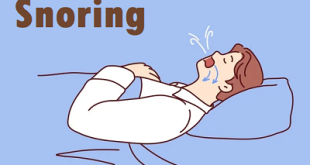Definition
Staphylococcal scalded skin syndrome is the serious life-threatening disease which response to a toxin produced by a Staphylococcal aureus infection. It is more common in infants than adults. This disease leads to peeling of outer layer skin to blister or it looks like burned by hot liquid. It is caused by the release of exotoxins A and B from Staphylococcus aureus. Desmosomes are the part of the skin cell responsible for adhering to the adjacent skin cell. The toxins bind to a molecule within the desmosome called Desmoglein 1 and break it up so the skin cells become unstuck. It mostly occurs during summer and fall seasons.
Staphylococcal scalded skin syndrome
History
- The connection between SSSS and Staphylococcus aureus ( aureus) was initially proposed in 1891
- It was not until 1956 that Alan Lyell, an eminent British dermatologist, described four patients with ‘a toxic eruption, which closely resembles scalding’
- The connection to aureus came in 1967 when Edmund Lowney described children that were culture positive for S. aureus who displayed the ‘scalded skin’ appearance
- In 1970, the toxins which are responsible for the exfoliation were isolated. It is now known that phage lytic groups of aureus produce exfoliative toxins to cause SSSS
- In 1972, the first case of SSSS was reported in a patient greater than 18 years of age. Since that time, several hospitals have found the incidence of SSSS among children to be on the rise
Pathophysiology
- In general population, carriage of S. aureus is high, though it is sensitive to methicillin, there are many methicillin resistance bacteria causing SSSS. S. aureus releases many enzymes and toxins, only 5% of human isolates produce the exfoliative toxins A and B (ETA, ETB) that cause SSSS. The nasal carriage of this stains with the fnbB gene is responsible for the risk of infection.
- Staphylococcal aureus of phage group II, types 71 and 55/71, release an exfoliative toxin. The toxin is disseminated haematogenously, producing widespread skin involvement.
- ETA and ETB are atypical glutamic acid specific trypsin-like serine proteases which collect in the skin.23 As the exfoliative toxin (ET), a protease, accumulates in the skin, it digests desmoglein 1 (Dsg1), a desmosomal cadherin involved in keratinocyte cell-to-cell adhesion.
- With the loss of Dsg1 there is a deterioration of keratinocyte-to-keratinocyte adhesivity in the stratum granulosum, resulting in bullae formation and denudation.
Epidemiology
- It was estimated that SSSS had an incidence between 0.09 and 0.56 cases per million inhabitants in general populations.
- Incidence in infants has been reported as high as 250 per million in the Czech Republic
- SSSS has a mortality rate of 3.6–11% in children. However, those adults affected by SSSS have a 40–63% mortality rate, perhaps due to an underlying comorbidity
Risk factors of staphylococcal scalded skin syndrome
Some of the risk factors that may cause SSSS are as follows:
- Children below 5 years
- Season during summer and autumn months
- Children not yet developed protective antibodies against aureus or not able to filter toxins in kidney
- Chronic kidney disease
- Suppressed immune system may also result in an inability to both excrete S. aureus exotoxin and to produce antibodies to the exfoliative toxin
- Haemodialysis may also cause infection through vascular access ports
- In adults without immunosuppression developing SSSS, it is likely that they contracted strains of S. aureus with the etb gene which encodes virulent exotoxin ETB.
Causes
- The symptoms of SSSS are caused by the exotoxin of group II, phage type 71 S. aureus. Two toxins are known to be involved: exfoliative toxin A (ET-A) and exfoliative toxin B (ET-B), with the former being the agent in most cases.
- Between 20 and 40 percent of the healthy population carry S. aureus in their nasal cavity. Once present in the skin, S. aureus releases the exotoxins, which cause blistering by disrupting the granular cell layer of the epidermis.
Manifestation of staphylococcal scalded skin syndrome
Sings that occur before the skin symptoms.
- The first and foremost symptom includes mild fever
- A sore throat
- Inflammation of the eyelids (Conjunctivitis).
- Chills and weakness
- Aches and pain in the joints and muscles.
- Feeling of poor health (malaise).
Symptoms of the skin.
- Wrinkling of the skin similar to tissue paper.
- The appearance of fluid-filled blisters or bullae in the groin, armpits, orifices of nose and ears.
- Rashes spread to the body parts including legs, trunk, and arms. In the case of newborns, it spreads often in the contact area of diapers and around the umbilical cord and mouth.
- The top layer of the epidermis may peel off in sheets (desquamation) and expose a moist, red and tender area of the skin.
- Fluid loss through the damaged skin.
Effects of staphylococcal scalded skin syndrome
- Loss of fluid eventually leads to dehydration and shock like a burn patient.
- Infection becomes worsening.
- Sepsis, a serious life-threatening infection of the blood and tissues in the body.
- Pneumonia can also occur.
- If left untreated, severe infection follows death.
- Electrolyte imbalances.
- Thermal dysregulation.
Diagnosis and Test
The doctor will identify the characteristic symptoms, a thorough clinical evaluation, and a detailed patient history. After the thorough physical examination, he/she will order for skin biopsy and culture.
Skin biopsy:
A small piece of skin from the affected area is taken for the microscopic examination. This reveals the non-inflammatory superficial splitting of the epidermis, which is indicative of the disorder and can differentiate it from similar disorders.
Blood Culture:
Bacterial cultures are taken from the areas where the bacterial germ resides such as the nasal passages, conjunctiva, umbilical cord, and nasopharynx area. The culture should be taken from the region affected by pneumonia, meningitis, arthritis, and deep skin infection. Cultures should not be taken from bullae as they are usually sterile. Sometimes bacterial culture is performed on urine, blood, and umbilical cord.
Complete blood count (CBC):
CBC reveals the erythrocyte sedimentation rate and also about the white blood cells (WBC). It measures the time taken for the sedimentation of neither erythrocytes nor the WBC.
Treatment and medications
The generally depends on the symptoms and the severity of the syndrome. Hospitalization is required for the cure of this syndrome.
- As the skin heals it becomes dry and itchy thus medication can be given for itching and moisturizers may be used on the skin and in the bath until this resolves.
- Pain relief is important and a combination of Paracetamol, Ibuprofen, and oral Morphine may be used to keep pain under control.
- If a child refuses to drink or is finding it difficult or painful, then a drip may be used to give intravenous fluids until your child is drinking better.
- It is helpful for children to be nursed only in underwear/nappies. Also, affected children do not like to be handled or cuddled as this causes more pain and blistering. It is often necessary to treat the blistered areas like burns and therefore burns dressings may be used.
Antibiotic therapy
- Methicillin and Flucloxacillin are given through a drip or cannula (small tube) inserted into your vein. Once if you are recovering from the syndrome these antibiotics will be given orally and can be continued in the home.
- Double antibiotic therapy can also be used by combining ceftriaxone and aminoside.
- Nafcillin or oxacillin is given to methicillin-sensitive Staphylococcus aureus.
- Vancomycin is given in cases of methicillin-resistant Staphylococcus aureus.
Prevention of staphylococcal scalded skin syndrome
- An infected patient should be isolated and kept in a sterile environment.
- Wash your hands often with antiseptic hand wash.
- Cover and clean the affected skin.
- Drink enough fluids to control the dehydration.
- Do not take medicines by yourself unless it is prescribed by a doctor.
- Be sure that you take enough sleep and rest.
- Take food along with plenty of fluids.
- Follow a diet that is rich in nutrients especially proteins, which can help skin to heal.
- Have foods with protein include meats, eggs, milk, and beans.
 Diseases Treatments Dictionary This is complete solution to read all diseases treatments Which covers Prevention, Causes, Symptoms, Medical Terms, Drugs, Prescription, Natural Remedies with cures and Treatments. Most of the common diseases were listed in names, split with categories.
Diseases Treatments Dictionary This is complete solution to read all diseases treatments Which covers Prevention, Causes, Symptoms, Medical Terms, Drugs, Prescription, Natural Remedies with cures and Treatments. Most of the common diseases were listed in names, split with categories.








Today I have microbiology class. My teach this topic. Really now understand
is there any other symtoms os S.aures for adults. (like small boils at the private and upper layer of the anus??. And where do this S. aureus dwell inside the body??.
Usually it invade the body through an open wound on the skin and sometimes through genital openings if not hygienic.
What is the medication for the treatment of staphylococcus aureus
Please read the treatment given in the post.
I don·t know how to treat ssss,.
Read treatment section in the post
I need suffering from staph for a long time now and all the treatment I embark on only last for few days and it will g back to square on,now my symptoms are as follows 1 my head hots,2 my heart burn 3 if l sleep and wake up in the middle of the night I find it difficult to sleep again, please help me out
Please consult a specialist as soon as possible to reduce the future effects.
Thank you for your advised, from now on I will Wash my hands regularly.
what is d different between this infection &gonorrhoea &how can someone cure gonorrhoea infections generally
The Gonorrhoea is sexually transmitted disease whereas this SSSS is caused because of infection of the staphylococcal bacteria. SSSS mainly affects the epidermis of the skin whereas gonorrhoea affects the genital parts and make infertile.
How many weeks does it take for severe treatment of staphylococcus aerus that is about ten years. What drug should be administered.
please consult a doctor.
I have been suffering from this sickness for long time now and I don’t know where to go again my own case is this I have moving objects in my private part and scratching what can I use for it
Please consult a doctor.
the doctor confirmed it that i had staphylococcus but i had no sign only waist pain,can staph cause waist pain?
pls what’s the different between staphylococcus and gornorhea and what is the treatment
Gonorrhea is an infection caused by the bacterium Neisseria gonorrhoeae.
Staphylococcus is a very complex disease, apart from being contracted sexually or as a toilet infection; Staphylococcus infection is a major cause of infertility in both male and female.
Please read the treatment in the post given in this app.
is smelly discharge caused by staphylococcus
Yes due to bacterial infection alone it gives smelly discharges.
what are the powerful drugs to be used when it curses the blockage of urinary organ, severe pains and also does not give way for easy flow of urine.
Should take proper diet to reduce the formation of stone. Drinking as much as 2 to 3 quarts (1.9 to 2.8 liters) a day may help flush out your urinary system. Unless your doctor tells you otherwise, drink enough fluid — mostly water — to produce clear or nearly clear urine.
what is best medication to cure it
Topical therapy with agents, such as fusidic acid and/or mupirocin, can be used as adjuncts to parenteral antibiotics, but they should not be used alone in true cases of staphylococcal scalded skin syndrome (SSSS).
How can I get rid of staphylococcus infection that blocks my nose and does not allow me to swallow saliva or food substance very well that’s painful swallowing
Please consult a doctor as soon as possible.
is this disease caused by Spider
The symptoms of SSSS are caused by the exotoxin of group II, phage type 71 S. aureus. Two toxins are known to be involved: exfoliative toxin A (ET-A) and exfoliative toxin B (ET-B).
pls I need help with Methicillin resistance staphylococcus aureus I just discovered I have it I was given a prescription of Iv ciprofloxacin as well as the ciprofloxacin tablet but it came back with a very bad odour what do I do to get read of it now I have taken the above medication and I still feel sick with boils and blurry visions and I am not sexually active still surprised about how I contacted this ailment
Please consult a doctor for appropriate advice.
I have used ciprofloxacin iv plus tablet to no avail the staphylococcus aureus came back worse pls help me out it make s me weak and inflammation all over
Please take immediate consultation with a doctor ASAP.
please, help a brother, i have staphylococcus for over two years now but i have been treating it but it keep on resisting the antibiotics please, i want to know, is vancomycin a tabulate or an injection and is it the solution to drug resistant staphylococcus ?
vancomycin is an intravenous injection and it is very effective against staph.
please is vancomycin a tabulate or an injection and is it the solution to drug resistant to staphylococcus ?
It is an injection.
Am having red spot under my feet and my feet chills, with bowel sound movement, could it be staphylococcus infection?
It might be but please consult a doctor as soon as possible.
can I use rocefphin drug for scanty growth of staph
Yes, you can use it for Staph infection.
can gonorrhoea lead to staphylococcus?
gonorrhea can lead to pelvic inflammatory disease but not staph.
what is the difference between ssssand cellulites
Staphylococcal Scalded Skin Syndrome (SSSS) and cellulitis are both skin infections caused by bacteria, often Staphylococcus aureus. However, they differ in their clinical presentations and severity. SSSS is characterized by widespread, painful, and tender skin with the appearance of a scald, while cellulitis is a localized infection causing redness, swelling, and warmth in a specific area of the skin. SSSS is more severe and often requires hospitalization, while cellulitis can typically be treated with oral or intravenous antibiotics on an outpatient basis.